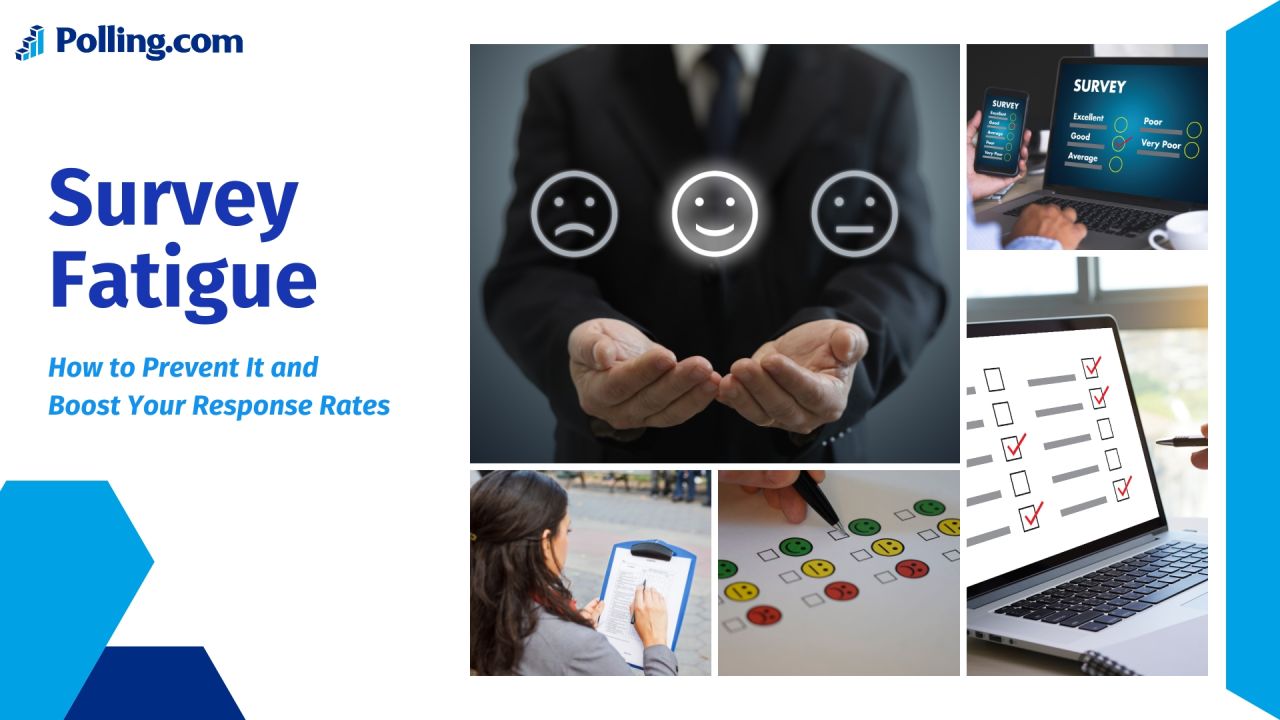
Survey Fatigue: How to Prevent It and Boost Your Response Rates
Ever felt tired of answering question after question in a survey? That’s likely survey fatigue kicking in.
It’s a real thing, and it can show up in two main ways.
First, there’s response fatigue. This is when people still open your survey, but they rush through it, giving quick, thoughtless answers just to get it done.
Second, there’s participation fatigue. This is when people see your survey invitation and just ignore it completely because they’re tired of taking surveys in general.
What is survey fatigue and why should you care about it?
Well, it messes with your data. If people aren’t answering, your results won’t be accurate. This leads to bad decisions based on unreliable information.
Plus, low survey response rates mean you’re not hearing from everyone you need to. And if people have a bad experience with your survey, they’re less likely to engage with you in the future.
This article will walk you through what causes survey fatigue and, more importantly, how to avoid it so you can boost your response rates and get the quality insights you need.
Understanding the Causes of Survey Fatigue
So, what makes people feel that fatigue survey feeling?
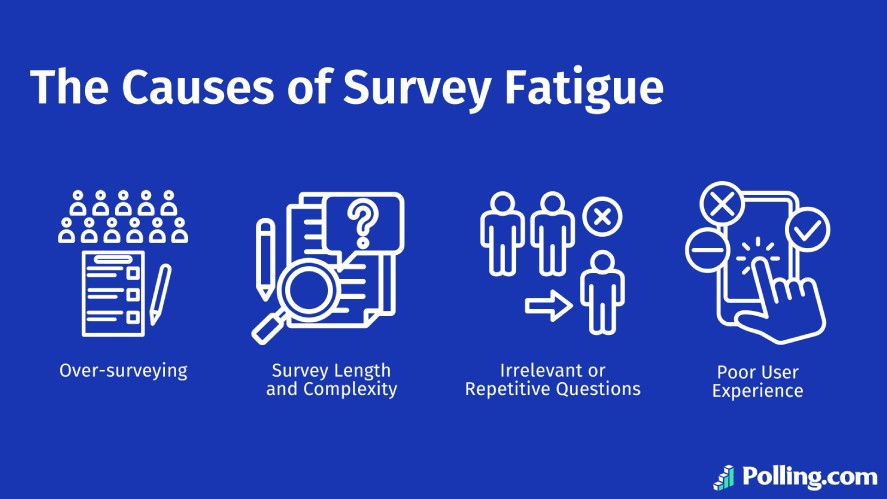
One major cause is over-surveying. If you’re constantly bombarded with requests to take surveys, you’re going to get tired of it pretty quickly.
The frequency of your surveys really impacts people’s willingness to respond. If you send out too many, too often, people will start tuning you out.
Another big factor is survey length and how complex it is.
Nobody wants to spend ages answering endless questions, especially if they’re difficult to understand or require a lot of thought. Long and complicated surveys are a surefire way to cause survey fatigue.
Asking irrelevant or repetitive fatigue survey questions also contributes to the problem.
If respondents feel like their time is being wasted on questions that don’t seem important or that they’ve already answered, they’re going to lose interest and motivation.
Finally, a poor user experience can lead to fatigue survey as well. Imagine trying to take a survey on your phone that isn’t designed for mobile. It’s frustrating!
Unclear instructions, confusing layouts, and a general lack of user-friendliness can all contribute to survey fatigue and make people give up or provide poor-quality responses.
Survey Fatigue vs. Survey Burnout: What’s the Difference?
Though often used interchangeably, survey fatigue and survey burnout are distinct.
- Survey Fatigue is short-term and often triggered by a single long or repetitive survey. It results in rushed or skipped responses.
- Survey Burnout is longer-term. It stems from repeated exposure to surveys over time, especially when feedback isn’t acknowledged or acted on.
Understanding the difference helps tailor your strategy, whether it’s shortening individual surveys or reducing overall frequency.
How to Measure Survey Fatigue
Before you can reduce survey participant fatigue, you need to know how to spot it.
One of the clearest signs is a high respondent drop-off rate, especially if many participants exit the survey around the same page or question.
Another red flag is when the time to completion is either much shorter or longer than expected, suggesting people are either rushing through or getting stuck.
You might also notice low-quality responses, like straight-lining (choosing the same answer repeatedly) or giving contradictory answers, which often signal disengagement.
Lastly, most survey tools offer abandonment tracking, which can help identify exactly where fatigue starts to impact the experience.
Keeping an eye on these metrics can guide you in improving your survey design and reducing friction.
Best Practices to Prevent Survey Fatigue
So, how to avoid survey fatigue? Luckily, there are many ways to fight back against survey fatigue and keep your response rates healthy.
Here are some key survey design best practices to keep in mind.
1. Optimize Survey Design
The way you design your survey can make a huge difference.
Start by keeping surveys short and focused. Only ask what you absolutely need to know. Respect people’s time, and they’ll be more willing to participate and give thoughtful answers.
Another great technique is to use skip logic and branching.
This lets you personalize the survey experience by only showing respondents questions that are relevant to them based on their previous answers.
While open-ended questions can provide rich qualitative data, try to minimize them when possible.
They require more effort from respondents and can contribute to survey fatigue, especially in longer surveys. So, use them strategically for key insights.
2. Time Your Surveys Strategically
Timing is everything! Avoid sending out too many surveys too often. Give your audience a break between requests.
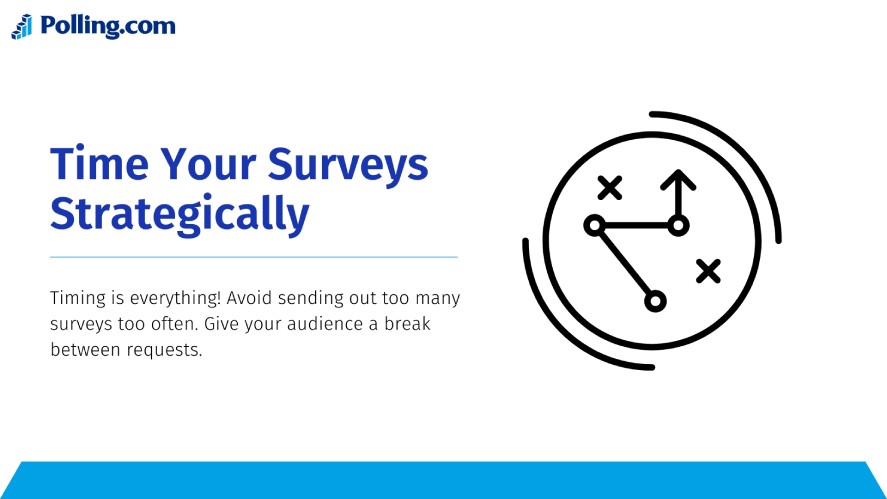
If you’re surveying customers, consider timing your survey after a purchase or service interaction, when their experience is still fresh in their minds.
Considering lifecycle events and the customer journey timing can significantly improve response rates and reduce employee survey fatigue.
3. Provide Value and Transparency
People are more likely to engage if they understand the importance of their contributions. So, clearly tell respondents how their feedback will be used and what impact it will have.
Showing transparency builds trust and makes people feel like their time is valued.
Even better, if possible, share the results of the survey or explain how their feedback has led to changes. This closes the loop and encourages future participation.
4. Leverage the Right Tools to Avoid Survey Fatigue
The survey tools you use can also play a significant role in preventing survey fatigue.
Modern online survey tools like Polling.com often have intuitive user interfaces and customizable flows that can make the survey experience much smoother and less tiring.
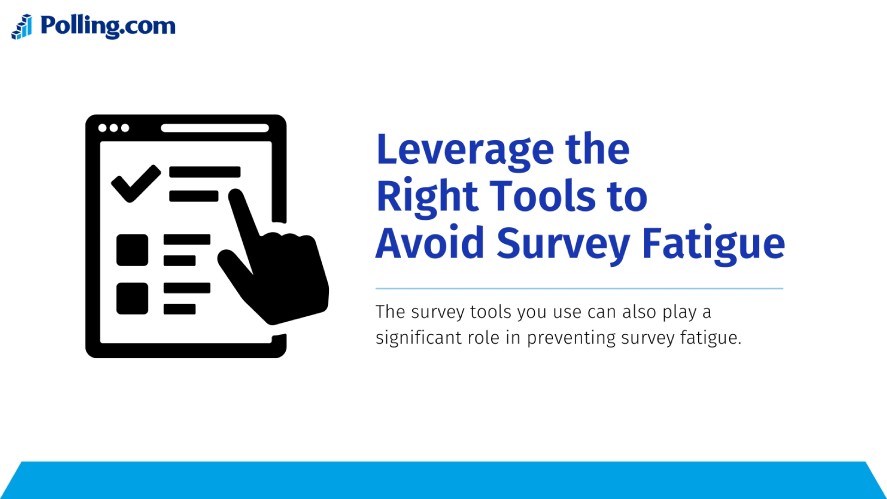
Compared to some other best survey tools, Polling.com offers more advanced features that allow for better survey research design.
While other free survey tools might be basic, investing in a tool that prioritizes user experience can pay off in higher quality data and better engagement.
When choosing employee survey tools or surveying tools in general, consider those that offer features specifically designed to minimize respondent burden.
Techniques to Boost Survey Response Rates
Beyond preventing survey fatigue, there are proactive steps you can take to encourage more people to complete your surveys.
1. Personalize Invitations
Generic survey invitations often get lost in the noise. Instead, try to personalize your outreach.
Use respondents’ names if you have them, and tailor the messaging to be relevant to their interests or past interactions.
Segmenting your audiences allows you to send more targeted surveys, which feel more relevant and less like a mass email.
2. Incentivize Participation
Offering rewards (survey incentives) can be a powerful motivator. This could include monetary incentives like gift cards or discounts, or non-monetary rewards such as entry into a prize draw or exclusive access to results.
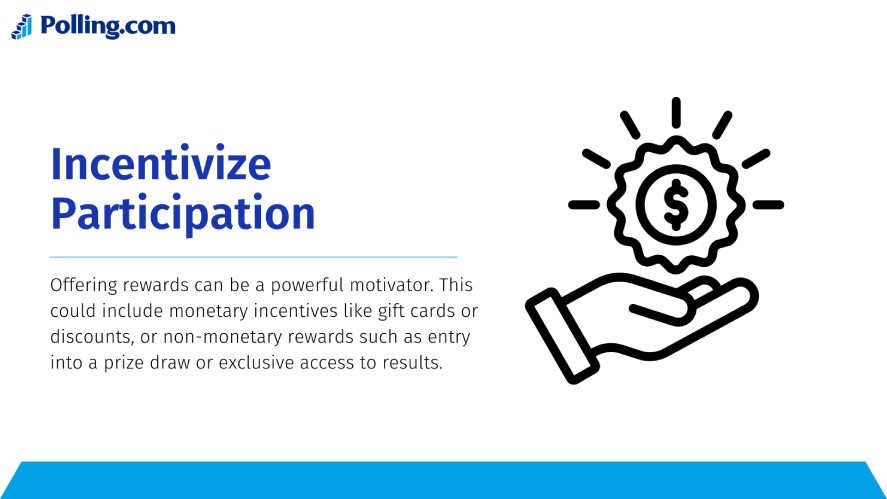
When considering incentives, it’s important to be ethical and ensure the reward doesn’t bias responses. Clearly state the incentive in the invitation and make sure the process for claiming it is straightforward.
3. Optimize for Mobile
In today’s world, many people will access your survey on their smartphones. So, having a responsive design that adapts seamlessly to different screen sizes is crucial.
Statistics show that a significant portion of online activity happens on mobile devices, so if your survey isn’t mobile-friendly, you’re likely missing out on a lot of responses.
A poor mobile experience can quickly lead to survey fatigue and abandonment.
4. Test and Iterate
Don’t be afraid to experiment! Use A/B testing to try out different aspects of your survey, such as the wording of questions, the layout, and the timing of your invitations.
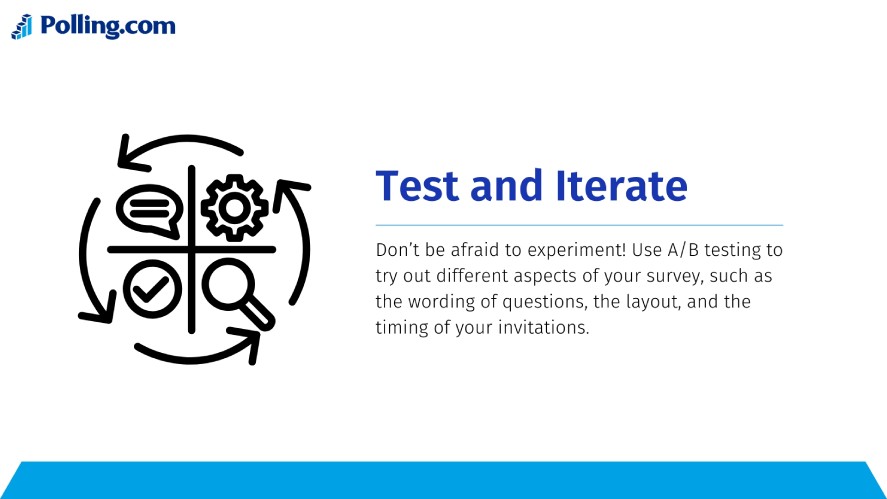
By tracking your response rates and completion rates, you can learn what works best for your audience.
Next, regularly analyze your past performance data to identify trends and areas for improvement. This iterative approach helps you continuously refine your survey design and minimize survey fatigue.
Survey Fatigue in Different Industries
The impact and prevention of survey fatigue can vary across different industries.
In B2B environments, where relationships might be more long-term and involve professional contacts, the tolerance for frequent or lengthy surveys might be lower.
Respecting the time of busy professionals is paramount. So, focus on highly targeted surveys with clear value propositions for participation, such as sharing industry-specific insights.
In contrast, B2C environments might involve larger, more diverse audiences.
While the risk of survey fatigue is still significant, strategies might lean more towards optimizing the user experience for a wider range of devices and offering broader incentives.
Specific sectors also require tailored approaches.
In healthcare, surveying patients about their experiences is crucial, but sensitivity to their well-being and the timing of surveys is essential to avoid fatigue survey in cross sectional survey design.
In education, surveying students or faculty requires careful consideration of the academic calendar and the potential for over-surveying across multiple courses or administrative needs, contributing to employee survey fatigue among educators.
For customer service, brief, timely feedback requests immediately after an interaction can be valuable, but lengthy post-service questionnaires can lead to drop-off and negative perceptions.
Balance Is Key
Ultimately, successful surveying is about finding a balance. You need valuable data to make informed decisions, but you also need to respect your audience’s time and attention.
Thoughtful design survey, strategic timing, clear communication of value, and the use of effective survey tools are all crucial in preventing survey fatigue and maintaining high response rates.
Always ask yourself if a survey is truly necessary, keep it as concise as possible, make the experience user-friendly, and show your appreciation for participants’ time.
By prioritizing a positive survey experience, you can gather the insights you need without overwhelming your audience and ensure continued engagement in the future.
Frequently Asked Questions
Aim for 5–10 minutes max (around 10–15 questions). For internal employee surveys, even shorter is better.
Incentives can boost motivation and completion rates, but they don’t eliminate fatigue caused by poor design or excessive length.
Limit frequency, clearly communicate the purpose, keep it short, and show visible action taken based on results.
Yes, industries with frequent feedback loops like education, healthcare, and tech can experience higher levels of fatigue.
